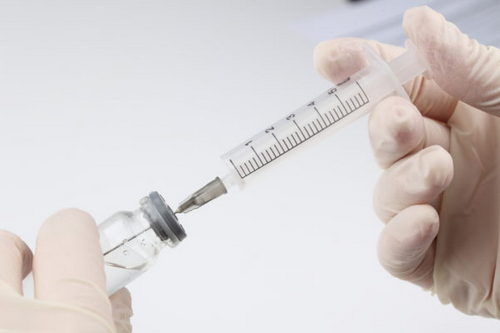The most important task that all parents set for themselves is to maintain and increase the health of their child. Pediatricians around the world are advocating the benefits of sour-milk living bacteria called probiotics for children. In some cases, only with their help it is possible to stop the pathological process in the baby’s body. What are these panaceas and how to use them?
The microflora of any child contains beneficial bacteria that inhabit the mucous surfaces of the body and the entire gastrointestinal tract. These microorganisms include lactobacilli and bifidobacteria.
They grow and multiply only in a favorable environment, which pathogenic microbes can disrupt. The occurrence of an imbalance between bacteria leads to the development of dysbiosis and other diseases.
Probiotics are medicines containing beneficial microorganisms and their metabolic products: bacteriocins, amino acids and vitamins.
These drugs not only restore normal flora in the human body, but also strengthen the immune system, fight viruses and infections, protect against toxic substances, improve digestion, and reduce the severity of side effects of antibiotics.
Most often used are children’s probiotics, available in liquid form. There are many similar drugs, and it is important for parents to understand their purpose.
Classification of probiotics
Today, there are five generations of drugs that normalize the microflora of a child:
- monoprobiotics (consisting of one strain of bacteria);
- polyprobiotics (consisting of several bacterial strains and some additives);
- self-eliminating antagonists (do not contain lactose);
- synbiotics (combined with enterosorbents);
- metabolic probiotics.
By the nature of the bacteria that make up the probiotics for children, the unit is as follows:
- bifid-containing;
- lactose containing;
- coliseous;
- yeast-like fungi;
- enterococci.
If we talk about the state of aggregation of probiotics, then there are liquid and dry forms. Liquid preparations include solutions and suspensions that have not undergone a drying process. They have several advantages: quick action, contain additional ingredients, can be taken not only inside. Dry probiotics are a fine powder containing microorganisms specially dried. They can be produced in the form of powders for the preparation of suspensions, capsules or tablets, which begin their action after 1-3 hours.
Probiotic preparations for children may contain lactic acid or donor strains, as well as antagonists. The first group includes bacteria that have the ability to produce lactic acid, which is necessary to maintain normal acidity in the intestines. Donor strains are microorganisms that make up the normal microflora of the human intestine. And bacteria are called antagonists that do not live in the child’s body, but are able to act beneficially when taken orally.
If the baby is eating milk formula
The benefits of breastfeeding have long been proven by medicine, but what if the artificial child does not receive the proper amount of beneficial microorganisms. The intestinal microflora of such babies is mainly represented by Escherichia coli, which can cause various pathological conditions. In such cases, pediatricians recommend taking probiotics for newborns or use a mixture that includes beneficial bifidobacteria.

The most popular drugs for improving the microbiocenosis of the intestines of a child who is breast-fed are Bifidum BAG and Trilact. They do not contain genetically modified strains, milk protein, lactose, preservatives or dyes. The composition includes only bifidobacteria and lactobacilli inherent in childhood and a nutrient medium that is close to the properties of mother’s milk.
If we talk about mixtures for baby food, enriched with various probiotics, then they can be used from the first day of life. They have not only a therapeutic effect, but also a preventive one, strengthening immunity and improving digestion. Parents, choosing milk formulas with probiotics for babies, should be guided by the recommendations of the pediatrician and the health status of their baby. If the child really needs to use such a mixture, then it is best to use it in courses, and not constantly.
Treatment of children with probiotics – which drug to choose?
Modern research has shown that probiotics and prebiotics for children can help cope with numerous diseases. The main thing is to choose the right drug for the treatment of a particular condition.
Doctors, given the severity of the disease and the type of lesion, use several simple rules when choosing a probiotic for therapy:
- with dysbiosis, monocomponent preparations containing bifidobacteria are used;
- in severe intestinal infections with diarrhea, combined probiotics with sorbents are used;
- if you suspect a bacterial lesion of the intestine, use drugs with lactobacilli and bifidobacteria at the same time;
- when a bowel lesion of a viral nature occurs, then drugs with lactobacilli are prescribed;
- multicomponent drugs are used to increase immunity.
Doctors prescribe probiotics for children under one year of age in liquid form and strictly according to indications, for example, with thrush or delayed increase in body weight. The first choice drugs for babies of this age are Bifiform baby and Biogaya, containing several types of beneficial bacteria. They are not exposed to hydrochloric acid in the stomach and quickly perform their functions.
Parents often ask the same question which probiotics are best for children. In medical practice there is no concept of “best”, there is a definition of “effective.” In each case, the same drug may show a different result. It depends on the nuances of the disease and the individual physiological characteristics of the child. Unfortunately, pharmaceutical companies do not produce universal probiotics for children.
Probiotics for children with various diseases
The main property of probiotics is to ensure the optimal composition of the intestinal microflora. That is why they are widely used for the treatment and prevention of intestinal diseases, the development of immunity and the elimination of symptoms of other pathological conditions.
Liquid probiotics for children are used in the complex treatment of the following diseases:
- Dysbacteriosis A change in the composition of the intestinal microflora for the worse is often found in artificial infants, children who have undergone antibiotic therapy or intestinal infection. In such cases, drugs are prescribed that contain several types of microorganisms: Linex, Hilak Forte, Probifor and others.
- Acute infectious diarrhea. With the development of such a pathological condition, doctors prescribe a course of antibiotics, therefore, when prescribing probiotic agents, their compatibility is taken into account. For the treatment of diarrhea in children the following are used: Bifidumbacterin, Acipol, Biovestin.
- Allergic skin diseases. It has been proven by medicine that probiotics for allergic children help reduce the manifestations of the disease, and stimulate the production of specific antibodies to the allergen. In the fight against atopic dermatitis, drugs with bifidobacteria and lactobacilli are usually used: Trilact, Linex, Bifilis.
- Constipation Probiotics for constipation in children quickly help restore the quantitative composition of beneficial bacteria that help normalize digestion. Preference is given to Biogai, Bifiform or Simbifer preparations, which are used in courses of 7-10 days.
- Respiratory diseases (influenza, acute respiratory infections). The decrease in the overall immunity of the child leads to the fact that in the “cold season” he becomes the most vulnerable to infection. Probiotics in such cases can be used any according to age and not only for treatment, but also for long-term prevention.
- Hepatic encephalopathy.
- Elimination of Helicobacter pylori.
- Lactose deficiency.

Parents often ask: are probiotics effective for newborns against colic? Researchers from different countries tested the beneficial properties of microorganisms in the fight against excessive gas formation in children and came to the conclusion that they only partially relieve symptoms.
Moreover, in children who are breastfed and suffering from colic, probiotics do not affect the restless behavior and duration of the attacks. But in artificial babies, the duration of crying is reduced and night sleep is normalized. Therefore, the use of probiotics for infants for this purpose is necessary only as directed by a doctor.
You need to take probiotics correctly!
When buying probiotics for children, the names of which are full on every corner, remember that the liquid form is the best option. The composition of such preparations already includes a nutrient medium for microorganisms, helping them to multiply and grow. Older children can purchase powders for the preparation of suspensions or capsules, which have a detachable structure to facilitate administration.
When treating a child with drugs containing live microorganisms, the following rules must be observed:
- comply with the dosage and frequency of administration of the drug selected by the doctor;
- store the drug according to the temperature regime and expiration date specified in the instructions;
- Drinking “live” drugs is necessary only with water or juice at strictly room temperature;
- for the treatment of chronic diseases, the course is from 14 to 21 days, if the condition is acute, then 5-7 days;
- ingestion is carried out 30 minutes before a meal or an hour after (some drugs can be added directly to warm food).
Can an overdose of probiotics happen? The answer is obvious: no. Even when taking a huge amount of the drug, the body will remove excess bacteria unchanged in a natural way. No harmful effect other than heaviness in the stomach will be observed.
Antibiotic and probiotic compatibility
Combination therapy with antibiotics and probiotics in children is quite common among pediatricians. Is it appropriate? It is proved that there is the possibility of using these drugs at the same time. The goal of such treatment is to reduce the risk of developing dysbiosis and gastritis, the severity of undesirable adverse reactions of the drug or exacerbations of the disease.
It is important when prescribing such treatment to choose the right drug and observe the time interval for admission. A probiotic in such cases is used at the time of the lowest concentration of antibiotic in the intestinal lumen in order to preserve the beneficial properties of bacteria. However, it is best to use probiotics for children after antibiotics, so that the survival rate of “good” microorganisms is highest.
From birth, babies come in contact with an aggressive environment inhabited by millions of pathogens. The role of normal intestinal microflora in maintaining the health of the baby is invaluable, so parents should not forget about the existence of probiotics. As you know, it is better to prevent the disease than to treat it for a long and expensive time.



